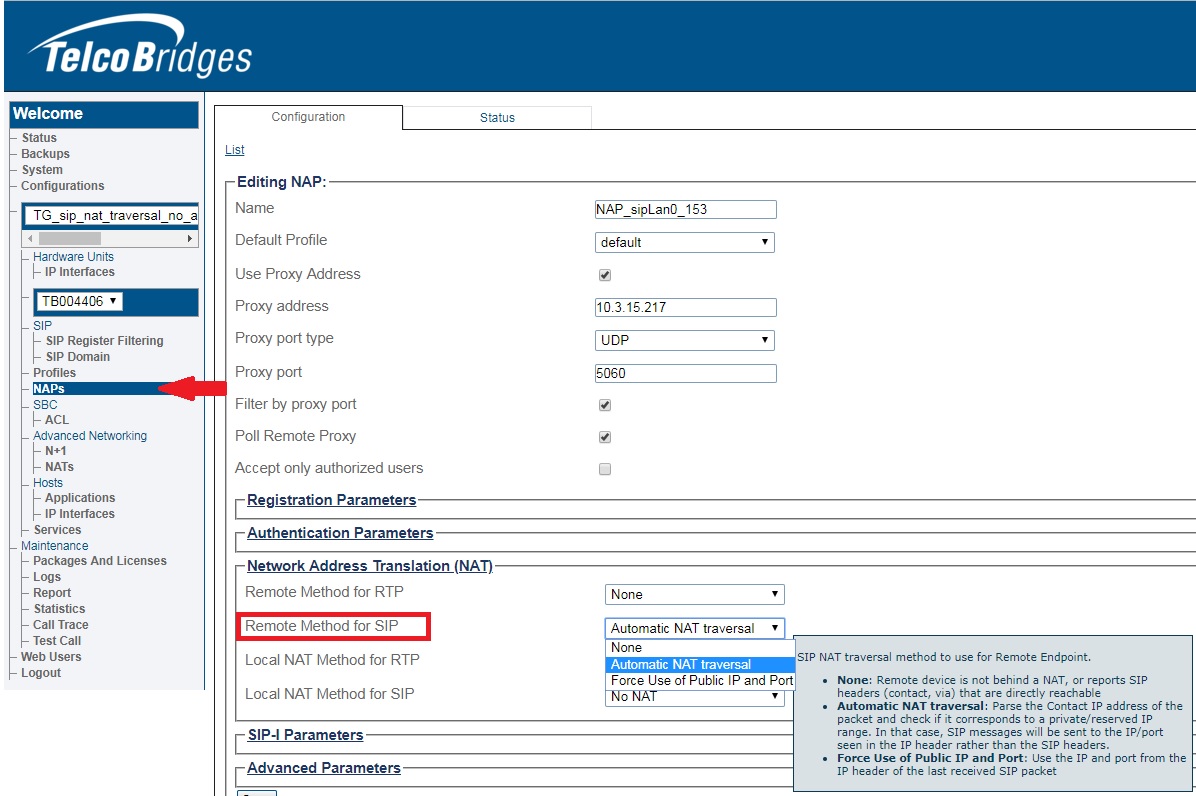Toolpack:SIP Configuration For Remote Symmetric NAT Traversal A
From TBwiki
(Difference between revisions)
| Line 3: | Line 3: | ||
SBC/Tmedia can be configured for [[Symmetric_NAT_Traversal|SIP messages traversing a remote NAT]] as follows:<br /> | SBC/Tmedia can be configured for [[Symmetric_NAT_Traversal|SIP messages traversing a remote NAT]] as follows:<br /> | ||
* '''None:''' Remote device is not behind a NAT, or reports SIP headers (contact, via) that are directly reachable. | * '''None:''' Remote device is not behind a NAT, or reports SIP headers (contact, via) that are directly reachable. | ||
| − | * '''Automatic | + | * '''Automatic NAT Traversal:''' Parse the Contact IP address of the packet and check if it corresponds to a private/reserved IP range. In that case, SIP messages will be sent to the IP/Port seen in the IP header rather than the SIP headers. |
* '''Force Use of Public IP and Port:''' Use the IP and port from the IP header of the last received SIP packet. | * '''Force Use of Public IP and Port:''' Use the IP and port from the IP header of the last received SIP packet. | ||
Revision as of 14:05, 9 April 2018
Applies to version(s): v3.0
SBC/Tmedia can be configured for SIP messages traversing a remote NAT as follows:
- None: Remote device is not behind a NAT, or reports SIP headers (contact, via) that are directly reachable.
- Automatic NAT Traversal: Parse the Contact IP address of the packet and check if it corresponds to a private/reserved IP range. In that case, SIP messages will be sent to the IP/Port seen in the IP header rather than the SIP headers.
- Force Use of Public IP and Port: Use the IP and port from the IP header of the last received SIP packet.
